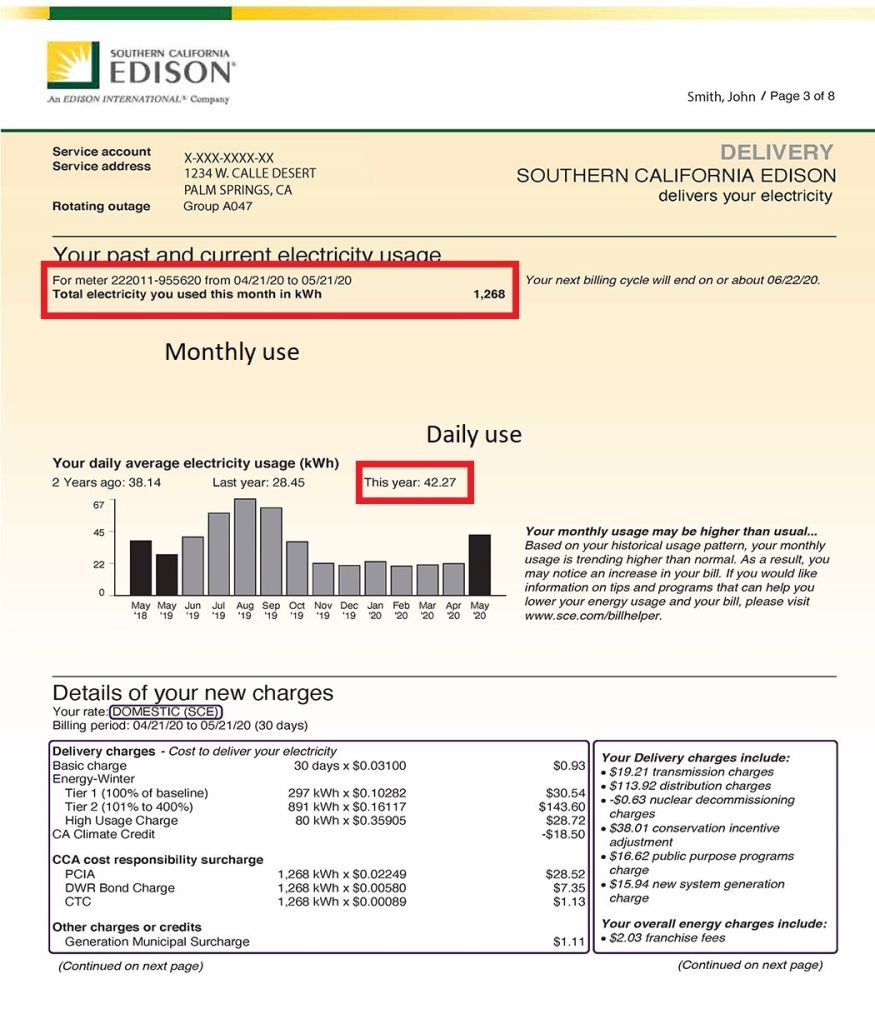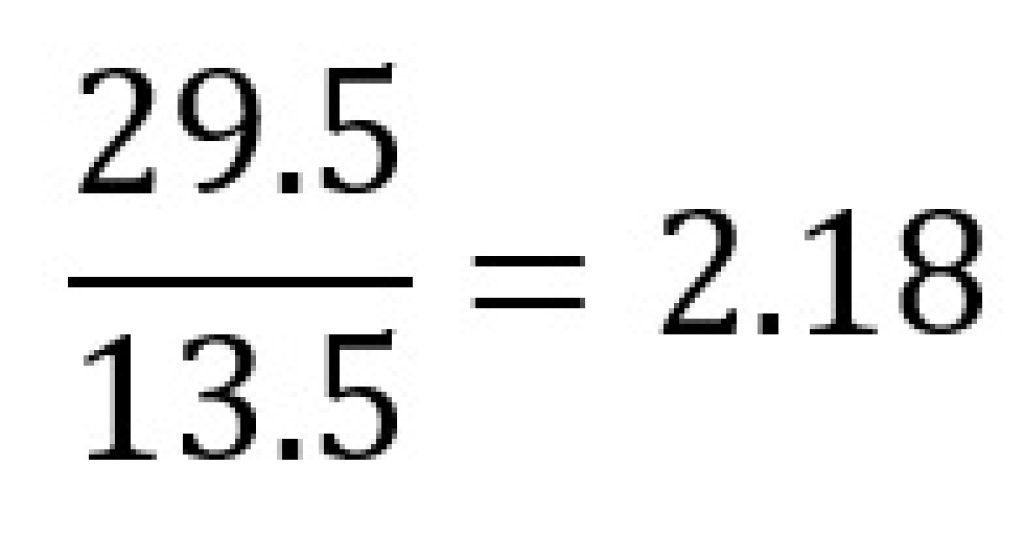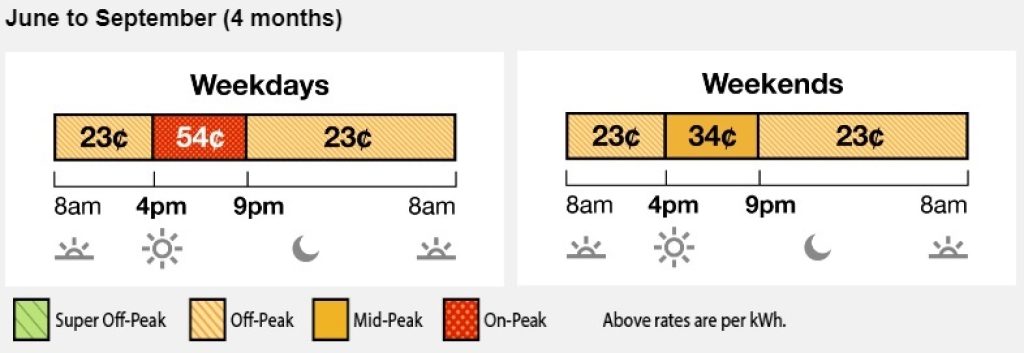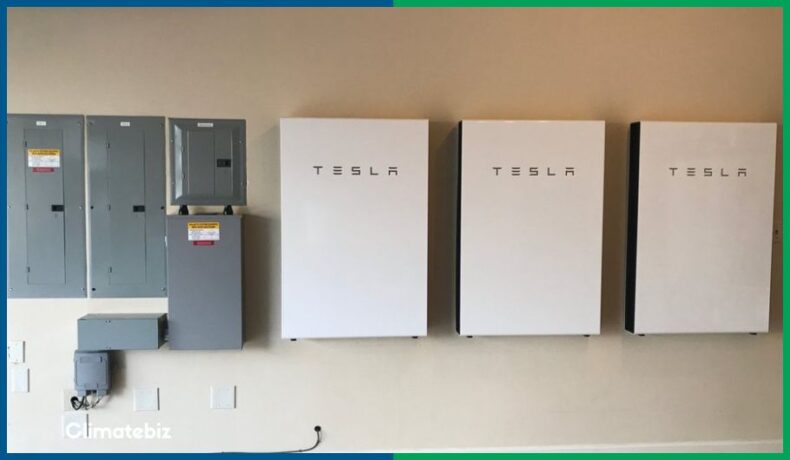If you’re curious about the number of Tesla Powerwalls your household requires, you’ve come to the right place!
The Powerwall is an efficient way to store solar energy at home that you can access anytime.
Currently, most people use this energy storage solution (ESS) as an emergency backup system during power outages, but it can also help to reduce your electricity bill.
In this article, we walk you through calculating the number of Tesla Powerwalls you’d need for a partial and total backup system.
In 2022, with the rising electricity prices, a Powerwall coupled with a Tesla Solar Roof is already a profitable solution in several states.
For this reason, we walk you through two scenarios to demonstrate how much you could save and even earn with your Tesla Powerwall.
Table of Contents
How Many Tesla Powerwalls Do I Need?
The Tesla Powerwall is a domestic energy backup solution that stores solar energy and seamlessly powers appliances during a power outage.
Our research revealed that a total house backup system requires three Tesla Powerwalls, whereas a partial backup system only requires one.
Let’s see how we get to these figures.
Please note: as of 2022, Tesla only sells the Powerwall as a bundle with the Tesla Solar Roof.
Formula To Calculate How Many Tesla Powerwalls Are Required
It takes only two simple steps to establish the number of Tesla Powerwalls you’ll require:
- Calculating your electricity needs
- Compare your needs to the capacity and power output of the Powerwall
First, you must decide between a total backup of your home’s electrical system or a partial backup of your essential appliances.
Naturally, if you opt for a complete backup system, you’ll require more Powerwalls, thereby increasing your system’s overall cost.
Total Backup
For a total backup system, you’ll need to look for your electricity consumption — you’ll find this as a figure (in kWh) on your monthly electricity bill, as illustrated below.

The average U.S. household uses 29.5kWh per day or 886 kWh per month, with huge disparities from one state to another: 18 kWh per day in California vs. 39 kWh in Louisiana.
Partial Backup
If you’re looking at a partial backup system, you’ll have to estimate the daily energy consumption of your essential appliances.
Please make a list of the appliances connected to the backup service line with their power output and their estimated hours of use per day.
Then, calculate the electricity consumption in kWh using the formula below:

We selected a few to illustrate the calculation:
| Power (Watt) | Hours Of Use Per Day | Electricity Consumption (kWh) | |
|---|---|---|---|
| Lights (10 Pcs) | 90 | 8 | 0.72 |
| TV | 120 | 5 | 0.6 |
| Aircon (18,000 BTU) | 1440 | All day | 5.8 |
| Refrigerator/freezer (28 cubics) | 190 | All day | 2.02 |
| Laptop/USB charging | 150 | 4 | 0.6 |
| Stovetop (induction) | 1800 | 1 | 1.8 |
| Total | 3,490 | 11.54 |
In the above scenario, the total daily energy consumption is 11.54 kWh with a total instant power of 3.49kW (if all appliances are connected simultaneously).
2. Your Needs Vs. Tesla Powerwall Capacity
The capacity of a single Tesla Powerwall (2022 Model Powerwall +) is 13.5kWh with a total power output of 7kW (no sun) or 9.6kW (with the sun).
Use the formula below to get the number of Tesla Powerwalls you’ll require:

A total backup of an average U.S. household translates into the following:

In conclusion, you’ll need three Tesla Powerwalls for a total backup system.
For partial backup, the electricity consumption is only 11.54 kWh per day; consequently, one Powerwall unit will be enough.
Chart State-By-State: Number Of Tesla Powerwalls You Require
You’ve seen that electricity consumption varies from one state to another. So, on that note, the following list illustrates the number of Tesla Powerwalls required for a total house backup system in every U.S. state:
| State | Average Daily Consumption (kWh) | Number of Tesla Powerwalls Required |
|---|---|---|
| Alabama | 37.49 | 3 |
| Alaska | 19.52 | 2 |
| Arizona | 34.44 | 3 |
| Arkansas | 36.09 | 3 |
| California | 17.82 | 2 |
| Colorado | 23.13 | 2 |
| Connecticut | 23.44 | 2 |
| Delaware | 31.22 | 3 |
| District of Columbia | 23.22 | 2 |
| Florida | 36.03 | 3 |
| Georgia | 35.25 | 3 |
| Hawaii | 17.45 | 2 |
| Idaho | 31.60 | 3 |
| Illinois | 23.92 | 2 |
| Indiana | 31.10 | 3 |
| Iowa | 28.32 | 3 |
| Kansas | 29.26 | 3 |
| Kentucky | 35.63 | 3 |
| Louisiana | 39.18 | 3 |
| Maine | 19.21 | 2 |
| Maryland | 31.98 | 3 |
| Massachusetts | 19.59 | 2 |
| Michigan | 22.04 | 2 |
| Minnesota | 25.51 | 2 |
| Mississippi | 38.50 | 3 |
| Missouri | 34.15 | 3 |
| Montana | 28.66 | 3 |
| Nebraska | 33.05 | 3 |
| Nevada | 31.52 | 3 |
| New Hampshire | 20.74 | 2 |
| New Jersey | 22.59 | 2 |
| New Mexico | 21.24 | 2 |
| New York | 19.69 | 2 |
| North Carolina | 34.95 | 3 |
| North Dakota | 34.22 | 3 |
| Ohio | 28.89 | 3 |
| Oklahoma | 35.77 | 3 |
| Oregon | 30.78 | 3 |
| Pennsylvania | 27.98 | 3 |
| Rhode Island | 19.22 | 2 |
| South Carolina | 35.43 | 3 |
| South Dakota | 33.49 | 3 |
| Tennessee | 38.91 | 3 |
| Texas | 35.96 | 3 |
| Utah | 25.49 | 2 |
| Vermont | 18.65 | 2 |
| Virginia | 35.97 | 3 |
| Washington | 32.34 | 3 |
| West Virginia | 35.06 | 3 |
| Wisconsin | 22.68 | 2 |
| Wyoming | 28.49 | 3 |
Please note: a total backup system doesn’t mean 100% of your needs will be covered annually. Coupled with the correct number of Tesla Solar Tiles, you’ll be able to rely on your electrical production around 90% of the time.
Will A Tesla Powerwall Pay For Itself?
Based on our calculations, the actual cost of a Tesla Powerwall plus its solar system equates to 17.4¢/kWh. This means a Powerwall will pay for itself in U.S. states where electricity prices are high, such as:
- Hawaii (44.81¢/kWh)
- California (26.77¢/kWh)
- Massachusetts (23.93¢/kWh)
- Connecticut (23.37¢/kWh)
- Maine (23.11¢/kWh)
- New York (21.88¢/kWh)
- New Hampshire (21.82¢/kWh)
- Vermont (20.24¢/kWh)
- Rhode Island (19.44¢/kWh)
- Michigan (18.03¢/kWh)
Related Reading: 7 Tesla Powerwall Alternatives
The Real Cost Of A Tesla Powerwall
Buying a Tesla Powerwall and its solar panels is a significant investment.
Every homeowner hopes the system will pay for itself thanks to self-electricity consumption and eventually profits from selling the excess electricity to the grid (net metering).
Let’s do the math for the Tesla Powerwall:
The buying price of 3 Tesla Powerwalls and a 7.2kW Tesla solar system, including installation, is around $43,000:
- $14,471 for the solar system
- $9,500 per Powerwall (discounted price for 3 units).
With a federal tax credit of 30%, a total backup system costs $30,100.
Now, let’s calculate the Levelized Cost of Energy (LCOE) — the cost per kWh of the system.
The LCOE considers all your system expenditures, including maintenance and installation, divided by the number of kWh it will produce and store over its lifetime.
For example, a 7.2kW Tesla solar system installed in California will produce 35 kWh daily for the next 25 years. That’s approximately 300 MWh over its lifetime.
Given its buying price of $10,130 (inc. tax credit), your solar electricity cost is 3.4¢/kWh.
For three Tesla Powerwalls, the buying price with installation is $19,950 (inc. tax credit). With a 10-year warranty at 1 cycle per day, this is equivalent to 142.5 MWh over its lifetime.
Therefore, the electricity cost from 3 Powerwalls is 14¢/kWh.
Overall, the actual electricity cost of your system is 3.4+14= 17.4¢/kWh.
In the end, using your Tesla Powerwall coupled with the Tesla Solar system will save you money if you live in a state with higher electricity prices above 17.4¢/kWh.
Please note: the LCOE of a Tesla Powerwall and its solar system might vary +/-1¢/kWh depending on the solar production potential at your location.
How To Save Money With Time-Of-Use And A Tesla Powerwall
You can already save money with only one Tesla Powerwall if your utility company offers Time-Of-Use (TOU) electricity rates.
In a TOU rate plan, the electricity price is at the highest during peak hours (usually between 4 pm and 9 pm) and at the lowest during the rest of the day/night.
For example, in California, during peak hours (4 pm to 9 pm), the electricity price is very high (up to 54¢/kWh). A single Powerwall will be enough to supply electricity to your house during this time at the cost of 17.4¢/kWh.

For each kWh, you’ll save 36.6¢. If you’re using 10 kWh during peak hours, that’s a daily saving of $3.7 or $1,350/year.
This is true for states where electricity is cheap, such as Oregon. The off-peak rate is 6.0¢ per kWh, much lower than the Powerwall. However, during peak hours, the rate is 24¢ per kWh, higher than the 17.4¢/kWh of the Powerwall.
Look for the TOU rate in your state and compare it with the LCOE of the Tesla Powerwall.
Related Reading: How To Build A DIY Powerwall (A Complete Guide)
What Is The Max Number Of Powerwalls I Can Install?
You’ve seen that a total backup system requires an average of three Tesla Powerwalls. But your electricity consumption will likely be higher if you have multiple AC units or a swimming pool pump.
Not to worry, you’ll be able to install up to 10 Tesla Powerwalls to reach a whopping 135 kWh and a power output of 70kW — enough to satisfy the energy needs of the biggest houses and compounds.
Final Thoughts
The Tesla Powerwall is a versatile domestic energy storage solution that can back up your house appliances during a power outage and save you money when electricity prices are high.
We discovered that a total backup system requires Three Tesla Powerwalls. In contrast, a partial backup of your essential appliances only requires one.
Additionally, we calculated that the actual cost of a total Tesla solar system is $0.174/kWh. If your utility company’s electricity cost is higher, then you’ll save money using this system.
In all cases, we advise you to subscribe to a net-metering scheme that allows you to sell your excess electricity, further reducing the cost of the Powerwall.

